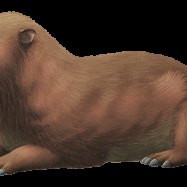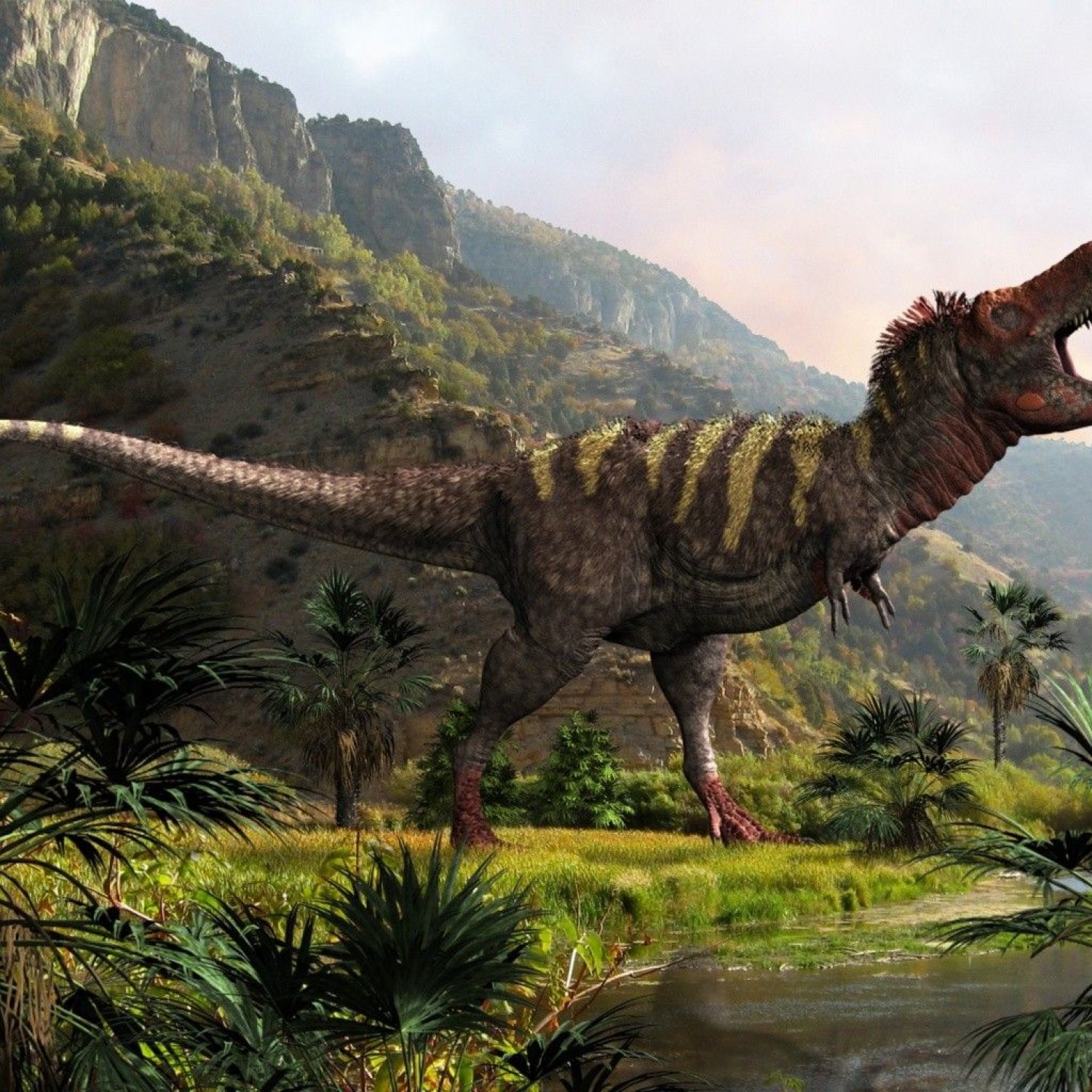
Tarbosaurus
12-13 meters (40-43 feet)
Tarbosaurus, also known as the Gobi Tyrant, was a large, bipedal dinosaur that roamed the Gobi Desert 70 million years ago. Standing at an impressive 12-13 meters (40-43 feet) in length, this fierce predator belonged to the tyrannosauridae family. With its sharp teeth and powerful jaws, the Tarbosaurus was a formidable hunter, making it one of the most well-known animals of the late Cretaceous period.
Animal Details Summary:
Common Name: Tarbosaurus
Kingdom: Animalia
Habitat: Grasslands, forests
The Mighty Tarbosaurus: A Fierce Predator of the Gobi Desert
The Gobi Desert, with its vast stretches of arid land and rugged terrain, is home to a multitude of unique and fascinating creatures. Among them is the Tarbosaurus, a formidable predator that roamed the grasslands and forests of Asia millions of years ago. This animal article will take you on a journey through time to discover the remarkable features of the Tarbosaurus, a remarkable member of the tyrannosaurid family.Origin and Taxonomy
The Tarbosaurus, known scientifically as Tarbosaurus bataar, belongs to the family Tyrannosauridae, which includes other well-known dinosaurs such as Tyrannosaurus rex and Albertosaurus Tarbosaurus. It was first described by the Russian paleontologist Evgeny Maleev in 1955, and its name comes from the Greek words "tarbos," meaning terror, and "sauros," meaning lizard. With its common name simply being a shortened version of its scientific name, it's easy to see why the Tarbosaurus inspires both awe and fear.Physical Characteristics
The Tarbosaurus was a large dinosaur, with a length of approximately 12-13 meters (40-43 feet) and could weigh up to 5-6 tons. With its massive size and powerful muscles, it is no surprise that this dinosaur was a fearsome predator. It had a large head, a massive jaw with sharp teeth, and a strong neck to support its impressive skull. Its body was built for agility and speed, with strong hind limbs that allowed it to run at high speeds and a long tail for balance. Unlike other large dinosaurs, the Tarbosaurus had arms that were relatively short and had two fingers instead of the three fingers found in its more famous cousin, Tyrannosaurus rex.Life in the Gobi Desert
The Gobi Desert, often referred to as the "land of dinosaurs," was the perfect habitat for the Tarbosaurus. It was a land of contrasts, with grasslands, forests, and lakes providing a variety of food sources for these apex predators Tiger. Its primary diet consisted of herbivorous dinosaurs such as hadrosaurs and ceratopsians. The Tarbosaurus was a carnivorous animal, with its sharp teeth used for tearing flesh and crushing bones. Its keen sense of smell and excellent eyesight were also essential tools for tracking and hunting its prey.Distribution and Fossil Record
The only known fossils of the Tarbosaurus have been found in Asia, primarily in the Gobi Desert region and parts of China. It is believed that these dinosaurs lived in large populations in this area during the late Cretaceous period, approximately 70-65 million years ago. However, due to the scarcity of fossils and the challenges of excavating in the Gobi Desert, much about this dinosaur's distribution and population remains a mystery.Discovery and Controversy
The first fossilized remains of the Tarbosaurus were discovered in 1946 by a Soviet-Mongolian expedition team led by Evgeny Maleev. However, it wasn't until 1955 that Maleev announced the discovery and described the dinosaur. The Tarbosaurus was initially thought to be a larger species of its famous relative, Tyrannosaurus rex. However, in recent years, some researchers have suggested that the Tarbosaurus is a separate species, based on anatomical differences in the skull and limbs.Animal Coloration
The Tarbosaurus is believed to have had a brownish-gray coloration, which would have helped it blend into its surroundings and ambush its prey effectively. While we can only imagine the colors that adorned this mighty creature, it is believed that its coloration would have been similar to that of other tyrannosaurids, such as T. rex, and would have helped it to survive and thrive in the harsh environment of the Gobi Desert.Modern-Day Significance
The Tarbosaurus continues to capture the imagination of people, and its name has made several appearances in popular culture. It has made appearances in movies, books, and video games, further solidifying its status as one of the most iconic and fearsome creatures to have ever walked the earth. Its fascinating adaptation and unique features have also made it a subject of study for scientists who continue to unravel the secrets of this magnificent animal.Conservation of Remains
With the discovery of new fossil sites and advances in technology, scientists continue to study the remains of the Tarbosaurus and other dinosaurs to better understand these ancient animals. However, the Gobi Desert, the primary source of these fossils, is not immune to the threats of development and climate change. As a result, it is essential to preserve these precious remains for future generations to continue studying and learning from.Conclusion
The Tarbosaurus, with its impressive size and fearsome appearance, continues to be one of the most iconic and fascinating animals to have ever inhabited the earth. As we continue to uncover the mysteries of this apex predator, it is vital to remember the importance of preserving its remains and the diverse ecosystems in which these animals once roamed. The Tarbosaurus may have gone extinct millions of years ago, but its legacy and significance remain firmly rooted in our modern-day understanding of the world's natural history.

Tarbosaurus
Animal Details Tarbosaurus - Scientific Name: Tarbosaurus bataar
- Category: Animals T
- Scientific Name: Tarbosaurus bataar
- Common Name: Tarbosaurus
- Kingdom: Animalia
- Phylum: Chordata
- Class: Reptilia
- Order: Saurischia
- Family: Tyrannosauridae
- Habitat: Grasslands, forests
- Feeding Method: Carnivorous
- Geographical Distribution: Asia
- Country of Origin: Mongolia
- Location: Gobi Desert
- Animal Coloration: Brownish-gray
- Body Shape: Large, bipedal
- Length: 12-13 meters (40-43 feet)
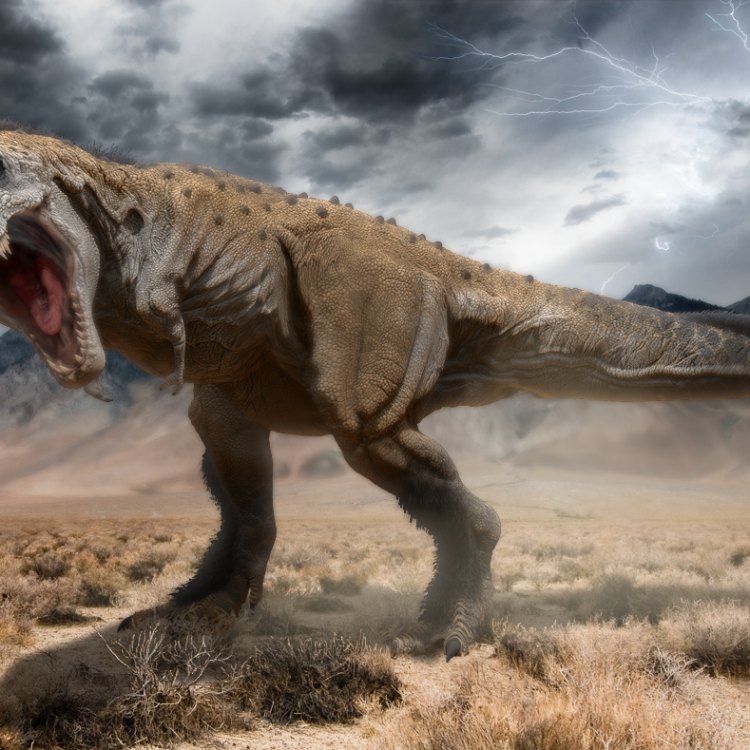
Tarbosaurus
- Adult Size: Large
- Average Lifespan: Unknown
- Reproduction: Sexual
- Reproductive Behavior: Oviparous (egg-laying)
- Sound or Call: Unknown
- Migration Pattern: Unknown
- Social Groups: Solitary
- Behavior: Aggressive, predatory
- Threats: Habitat loss, illegal fossil trade
- Conservation Status: Extinct
- Impact on Ecosystem: Top predator
- Human Use: Paleontological research
- Distinctive Features: Large, skull with sharp teeth
- Interesting Facts: Close relative of Tyrannosaurus rex
- Predator: Yes
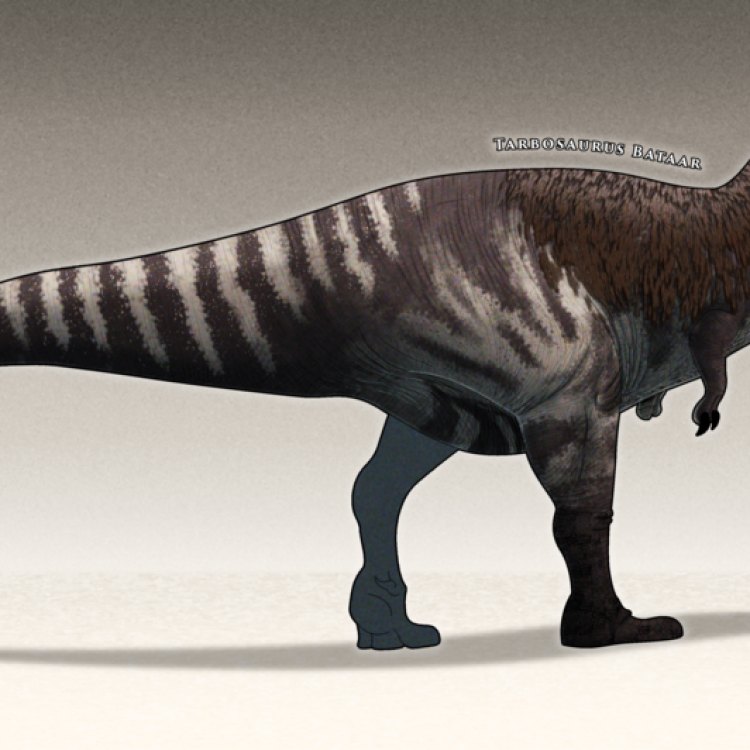
Tarbosaurus bataar
Unveiling the Mighty Tarbosaurus: A Fierce Predator of Ancient Times
Deep in the pages of history, when dinosaurs ruled the earth, there lived a formidable predator known as the Tarbosaurus. The name, derived from the Greek words for "alarming lizard," perfectly describes this creature's fierce and intimidating nature. But beyond its fearsome reputation, the Tarbosaurus has a fascinating story to tell.With its large size, sharp teeth, and predatory behavior, the Tarbosaurus was a top predator in its ecosystem PeaceOfAnimals.Com. But while it may have ruled the land with its terrifying presence, this ancient creature also faced threats that ultimately led to its extinction. Join us as we delve into the world of the Tarbosaurus and unlock the secrets of this extinct giant.
Exploring the Size, Lifespan, and Reproduction of the Tarbosaurus
The Tarbosaurus was undoubtedly a massive creature, with adult individuals reaching lengths of up to 12 meters (39 feet) and standing at a height of 4 meters (13 feet). Estimated to weigh around 5-6 tons, it was almost as large as its famous cousin, the Tyrannosaurus rex. With its size, the Tarbosaurus was truly a force to be reckoned with, making it a formidable predator in its ancient world.Unfortunately, the average lifespan of this creature remains unknown, as there is limited evidence to support any claims. However, based on its close relative, the T. rex, it is believed that the Tarbosaurus could have lived for up to 30 years.
In terms of reproduction, the Tarbosaurus was asexual, with individuals having distinct male or female reproductive organs Tiger Beetle. Like other dinosaurs, it followed a sexual reproductive behavior and was oviparous (egg-laying). Female Tarbosaurus would lay a clutch of eggs, and once hatched, the young would fend for themselves.
Understanding the Behavior of the Tarbosaurus
The Tarbosaurus is known as an aggressive and solitary creature. This means that it preferred to hunt and live on its own, rather than in a group. Its large size, sharp teeth, and powerful jaws made it a formidable predator, capable of taking down prey that weighed several tons.While the Tarbosaurus was known for its intimidating and aggressive behavior, recent studies have shown that it may have been more intelligent than previously thought. Researchers have identified the presence of an olfactory bulb, the area of the brain responsible for processing smell, indicating that the Tarbosaurus may have had a heightened sense of smell, allowing it to track its prey more effectively.
But despite its fierce reputation, the Tarbosaurus also faced threats in its ecosystem. The loss of habitat due to climate change, as well as the illegal trade of fossil remains, has had a significant impact on the population of these creatures. And while they were once the top predator in their environment, their extinction left a void in the ecosystem that would take millions of years to fill.
The Impact of the Tarbosaurus on the Ecosystem
As a top predator, the Tarbosaurus had a significant impact on the ecosystem in which it lived. It played a crucial role in maintaining balance and regulating the population of other species. By preying on herbivorous dinosaurs, the Tarbosaurus helped control their numbers, preventing them from overgrazing and damaging the environment.Furthermore, the presence of such a powerful and fearsome predator served as a natural deterrent for other predators, keeping them in check and ensuring a healthy balance in the ecosystem. However, with the extinction of the Tarbosaurus, this balance was disrupted, leading to potential cascading effects on the entire ecosystem.
Human Use and Distinctive Features of the Tarbosaurus
While the Tarbosaurus may be long gone, its legacy lives on in the field of paleontological research. The discovery of its fossils and remains has shed light on the world of dinosaurs and their existence millions of years ago. Scientists have been able to learn about the behavior, anatomy, and lifestyle of this ancient creature by studying its remains.One of the most distinctive features of the Tarbosaurus is its large skull, boasting a massive jaw with sharp, serrated teeth that were used to tear through the flesh of its prey. Its massive size, combined with its powerful bite, made it a formidable predator, capable of taking down even the most massive and robust creatures of its time.
Interesting Facts About the Tarbosaurus
The Tarbosaurus may not be as well-known as its cousin, the T. rex, but it is equally fascinating. Here are a few interesting facts about this ancient creature:- The Tarbosaurus was a close relative of the T. rex, with some experts even considering them to be the same species. However, fossil evidence indicates that they were two distinct species.
- The first Tarbosaurus fossils were discovered in Mongolia in the late 1940s, but it wasn't until the 1990s that they were officially recognized.
- This mighty predator lived in the Late Cretaceous period, about 70-65 million years ago.
- The Tarbosaurus is believed to have had a keen sense of smell, with its olfactory bulb being larger than that of the T. rex.
The Fate of the Tarbosaurus
Sadly, like most dinosaurs, the Tarbosaurus met its end when a mass extinction event occurred, wiping out 75% of all species on Earth. While the cause of this mass extinction is still debated, one thing is certain - it left a void in the ecosystem that has yet to be filled.Today, the Tarbosaurus may only live on in the memories and imaginations of those who are fascinated by the world of dinosaurs. However, by studying its remains and learning about its behavior and lifestyle, scientists continue to uncover its secrets and paint a clearer picture of this extinct giant.
In Conclusion
The Tarbosaurus was a ferocious predator, ruling the land with its large size, sharp teeth, and aggressive behavior. Its presence had a significant impact on the ecosystem, playing a crucial role in maintaining balance and regulating the population of other species. Today, it remains an intriguing and mysterious creature, with much left to discover and learn about its life and existence.And while it may have fallen victim to habitat loss and illegal fossil trade, the legacy of the Tarbosaurus lives on, etched in the pages of history as a mighty and fearsome predator of ancient times.
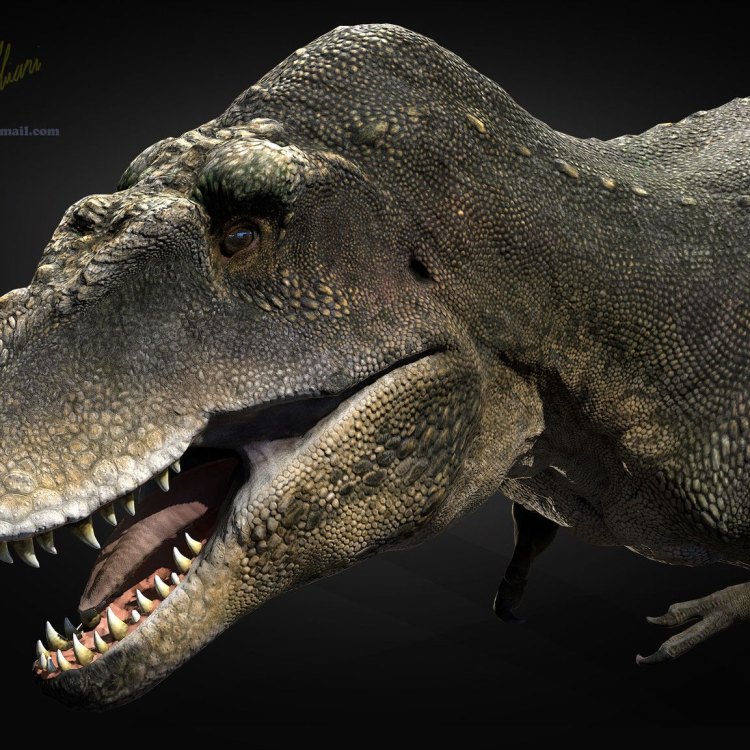
The Mighty Tarbosaurus: A Fierce Predator of the Gobi Desert
Disclaimer: The content provided is for informational purposes only. We cannot guarantee the accuracy of the information on this page 100%. All information provided here may change without prior notice.










